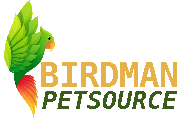Blue Macaws – Gardeners Of The Forest
Blue Macaws Forest Gardeners, Better even than Amazon, the blue macaws are a rapid and highly mobile airmail distribution service — for palm seeds. A few months ago, we shared a study about parrots’ wasteful eating habits, which found that approximately half of the foods they handled ended up on the floor (more here). Wasting food doesn’t make much sense, especially in the wild, which raises the question: are there any practical effects of slobby eating?
A new study may provide some clues. A team of researchers studying the two all-blue macaw species has found that these parrots help spread the seeds of 18 plant species in Brazil and Bolivia (ref). They came to this conclusion by direct observations and camera traps that recorded more than 1,700 fruit and nut dispersal events by hyacinth and Lear’s macaws. Both species were found to be effective seed dispersers, despite suspicions that these parrots fully consume all seeds in the fruits or nuts they picked. This finding challenges previously held ideas that the dispersal of large seeds in South America was carried out by now-extinct Pleistocene megafauna.
There are two large all-blue macaw species alive in the wild today: the hyacinth macaw, Anodorhynchus hyacinthinus, and Lear’s macaw, Anodorhynchus leari. With a wingspan of one meter (3.3 feet), the hyacinth macaw is the largest of all the macaws, and is the largest parrot in the world. The hyacinth macaw has bright yellow skin patches around its eyes and a distinctive yellow patch at the base of its massive black beak. It is found in several discrete areas in central and eastern South America (Figure 1), and is classified as Vulnerable due to poaching for the wild bird trade (more here).
Lear’s macaw, also known as the indigo macaw, is slightly smaller than its darker blue cousin, and is sometimes mistaken for it. But Lear’s macaws can be distinguished from hyacinth macaws by its own specially shaped yellow skin patch at the base of its large black beak, and by the faint greenish tinge to its paler blue plumage. Rediscovered in 1978, Lear’s macaw is rare within its extremely restricted ranges in eastern Brazil (Figure 1) and is Endangered because of poaching for the illegal wild bird trade.
The two surviving Anodorhynchus macaw species have the strongest beaks amongst the parrots, capable of easily breaking open even the largest and strongest nuts produced by a variety of palm trees (ref). But are these parrots consuming all of the seeds or are they behaving as other parrots do by dropping a fair number of undamaged seeds throughout the landscape? To better understand these two parrots’ relationships with the seeds they eat, an international team of researchers carried out dozens of expeditions and placed 35 infrared-triggered camera traps in the Caatinga, Cerrado and Pantanal biomes in Brazil and Bolivia. Whilst there, they recorded 1,722 seed dispersal events (1590 through direct observations and 132 through camera trapping), and observed the macaws flying with nuts for up to 1.6 kilometers (1 mile) from where they picked them (Figure 2).
In this study, researchers recorded that both macaw species defleshed palm fruits after picking them from the mother plant (figure 2a) and before transporting the nut to a distant perching site where it was broken open and the seeds consumed (Figure 2b,c). Nuts were mainly dispersed by carrying in a flying parrot’s bill but were sometimes carried in its feet (Figure 2d).
Most of the fruits dispersed (97.7%) were from six palm species, and almost all, if not all of them, could be considered as dependent upon megafauna for seed dispersal. In most cases, the researchers observed primary seed dispersal events (92.6%), where the macaw picked the fruit from the mother plant and moved it to another location. However, the researchers did record 121 instances of tertiary seed dispersal, where the macaws collected palm seeds that had been regurgitated by cattle and goats (Figure 2g,h). Nearly all of these (96.7%) tertiary seed dispersal events applied to just one palm species, Acrocomia totai. After the macaws had flown away with a palm fruit, the researchers located the perches where the macaws handled and consumed the fruits and searched for both damaged and undamaged seeds to compare the proportion of those that survived (Figure 3e), and also looked for germinating seeds and sapling palms. Blue Macaws Forest Gardeners
